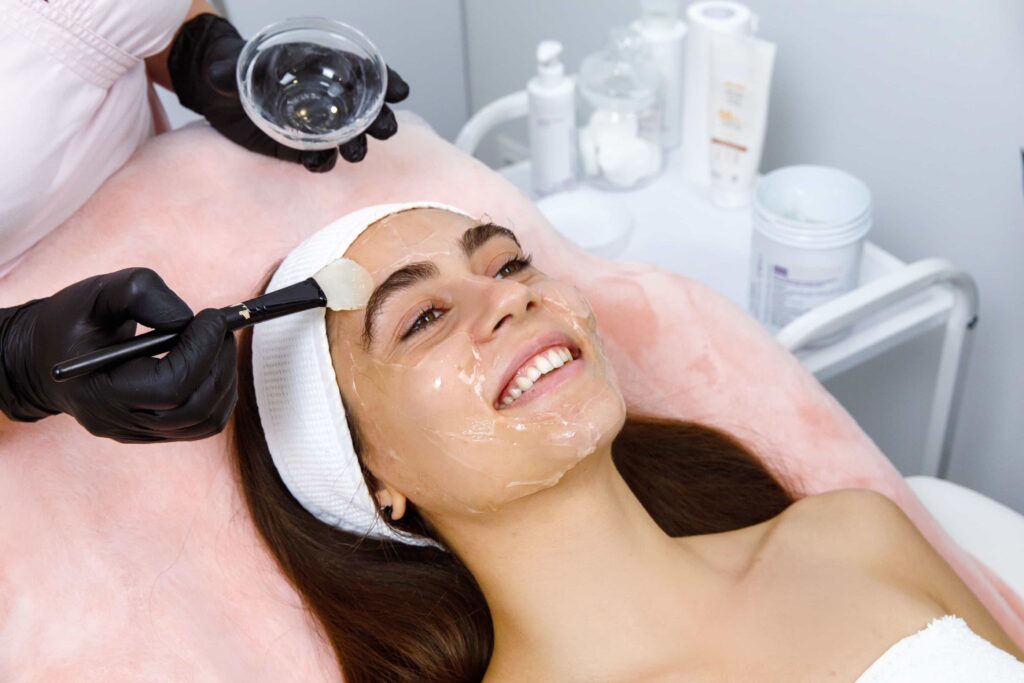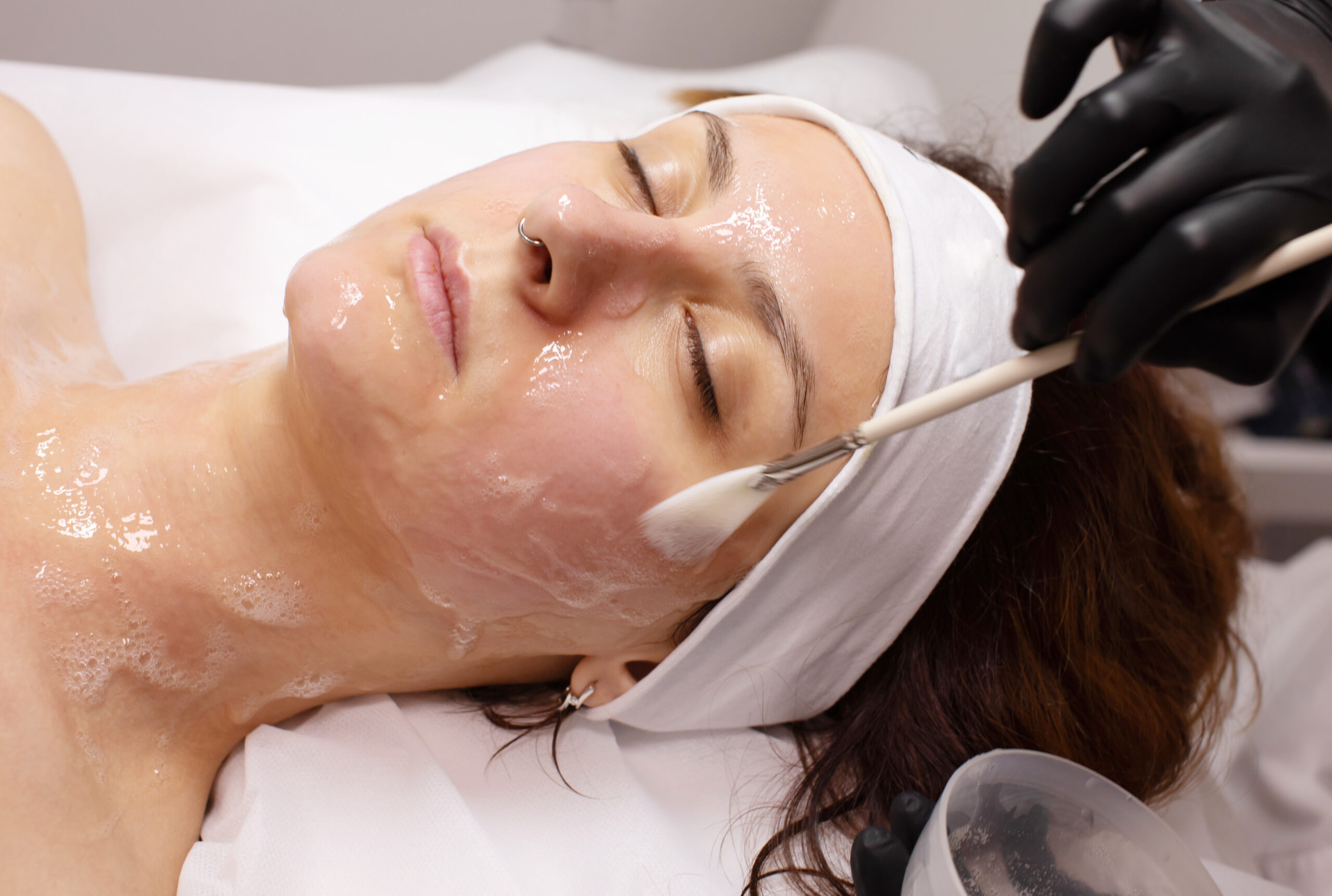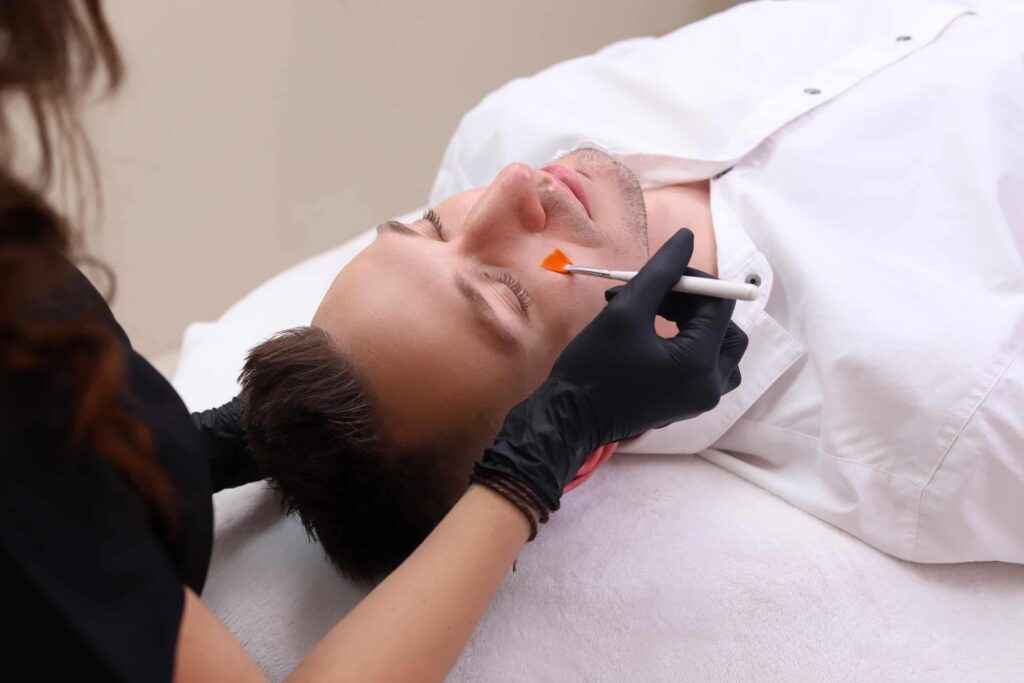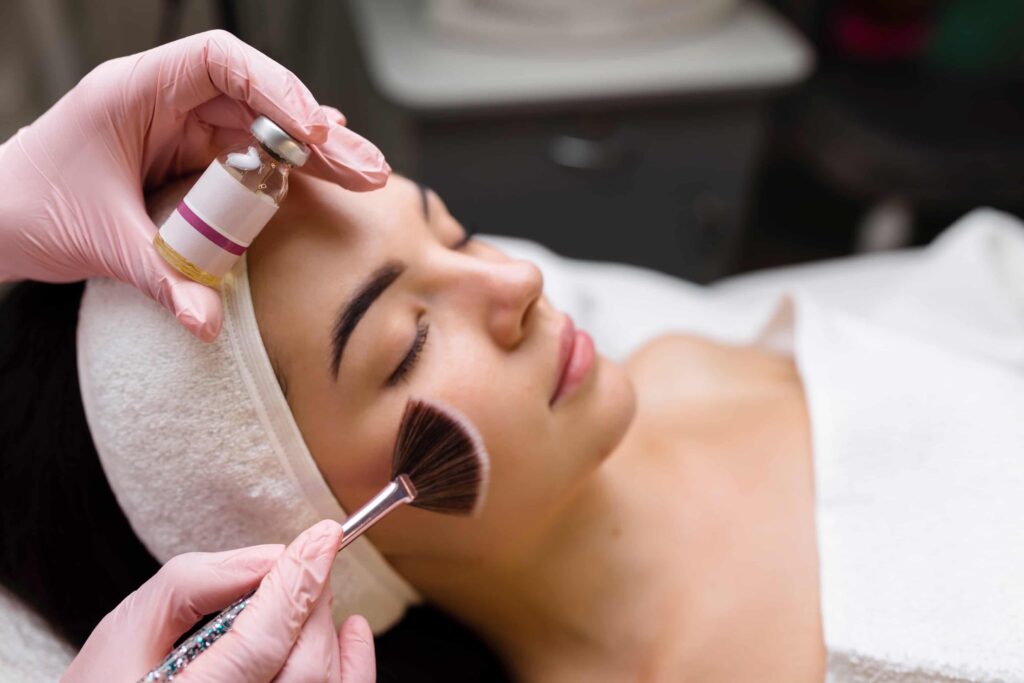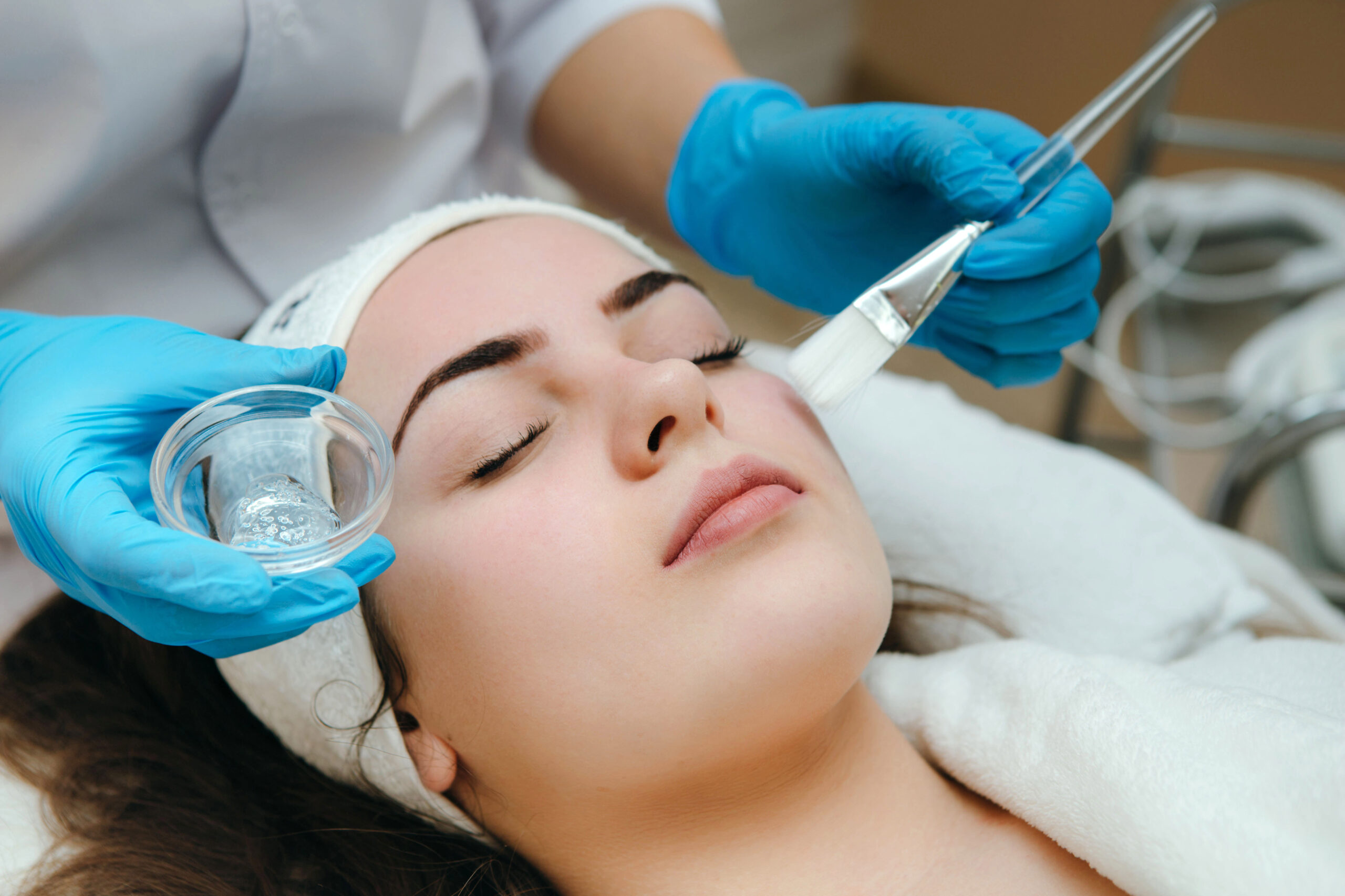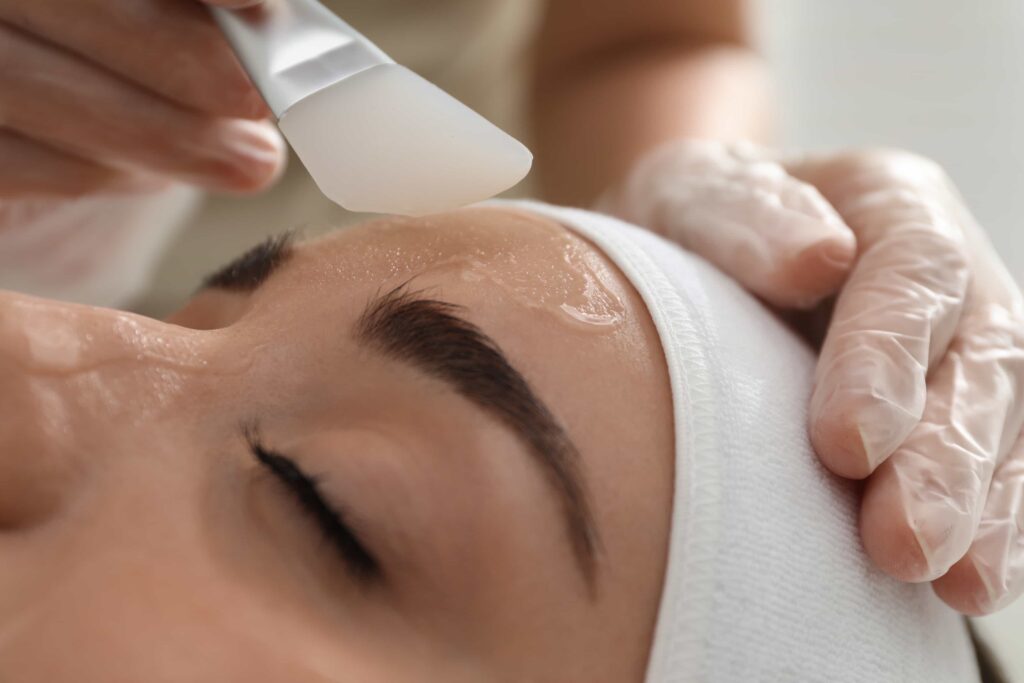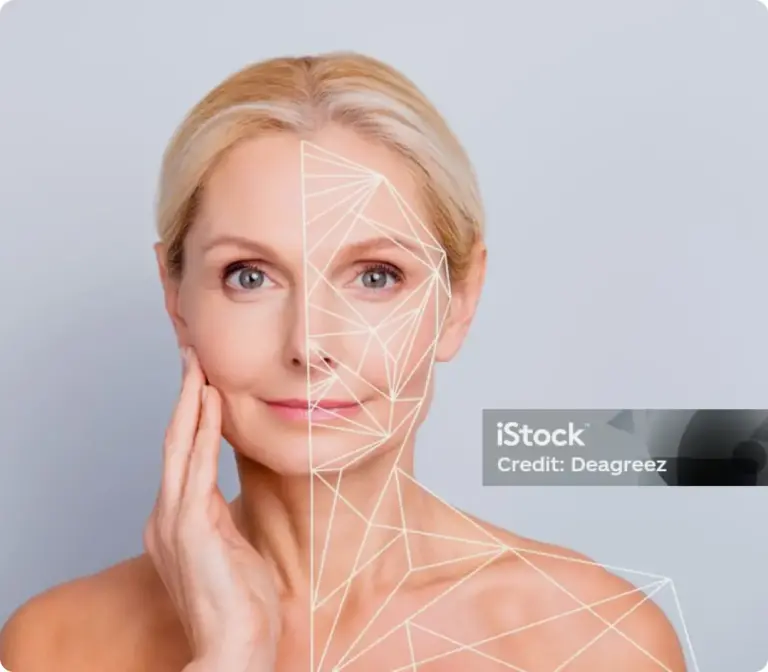Chemical peels improve the skin’s appearance by exfoliating the outer layers, which eventually peel off to reveal fresher, smoother skin.
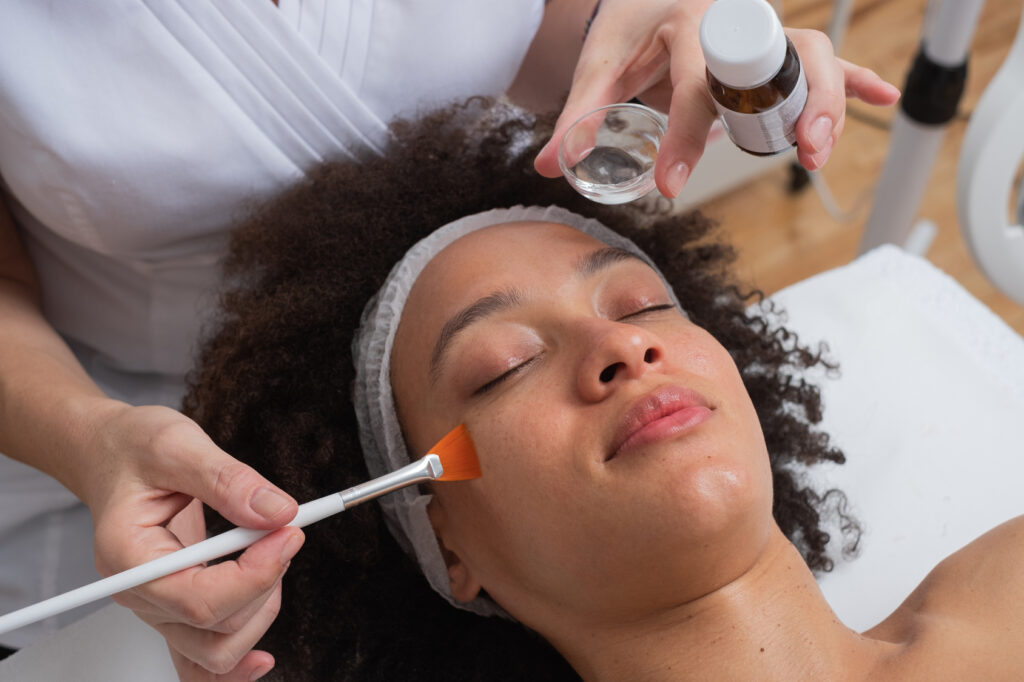
Several types of chemical peels are available, each offering unique benefits.
Light peels exfoliate the surface for mild texture and tone improvements.
Medium peels go deeper to treat wrinkles and acne scars.
Deep peels provide the most dramatic results but require more downtime.
Ultimately, the right peel depends on your skin goals and recovery preferences.
Glycolic Acid Peel:
To begin with, glycolic acid—derived from sugarcane—exfoliates the skin’s outer layer. This peel effectively treats mild acne, uneven skin tone, and fine lines. Providers often recommend it for all skin types due to its versatility.
Lactic Acid Peel:
Similarly, lactic acid—sourced from milk—gently exfoliates while hydrating the skin. This peel works well for sensitive skin and helps improve texture and brightness. Like glycolic acid, it is safe for all skin types.
Salicylic Acid Peel:
In contrast, salicylic acid peels penetrate deeper into the pores, making them ideal for acne-prone skin. They help unclog pores, reduce inflammation, and minimize acne scars. This peel is also suitable for all skin types.
ZO Stimulator Peel:
Finally, the ZO Stimulator Peel offers a mild, superficial exfoliation that delivers an immediate glow with little to no downtime—perfect for a quick refresh before events.
TCA Peel:
To start, TCA (trichloroacetic acid) peels are stronger than superficial peels and effectively treat pigmentation, wrinkles, and sun damage. However, they require longer downtime and often cause temporary redness and peeling. Because of their strength, TCA peels are not recommended for darker skin types due to a higher risk of discoloration.
Jessner’s Peel:
Next, Jessner’s peel blends salicylic acid, lactic acid, and resorcinol to target acne, hyperpigmentation, and fine lines. Compared to lighter peels, it delivers more noticeable results and is generally safe for all skin types.
PRX-T33 Peel:
Meanwhile, the PRX-T33 peel offers an innovative approach by combining TCA and kojic acid with a patented formula that allows deeper penetration—without the excessive peeling or downtime typically associated with stronger peels. This makes it a great option for those seeking results with minimal disruption.
ZO 3-Step Peel:
Additionally, the ZO 3-Step Peel is a moderate-depth treatment that includes salicylic, lactic, and TCA acids, followed by a retinol cream. Together, these ingredients exfoliate and slough off damaged skin, promoting visible renewal.
VI Peel:
Finally, the VI Peel uses a powerful blend—including salicylic acid, TCA, and phenol—to improve skin texture and reduce signs of aging. As a moderate-depth peel, it strikes a balance between results and manageable downtime.
Phenol Peel:
As the most intensive option, phenol peels offer deep penetration to treat severe wrinkles, deep scars, and extensive sun damage. Because of their strength, they require significant downtime and must be administered by highly experienced professionals. However, they are not suitable for darker skin types due to the elevated risk of scarring and pigmentation issues. Therefore, careful patient selection is crucial when considering this type of peel.
Melasma treatment requires a multi-faceted approach. While chemical peels serve as a second-line option to target the epidermal layer, they should be avoided in dermal melasma due to increased risks of scarring and post-inflammatory hyperpigmentation.
In some cases, peels can trigger an immune response that breaks down melanin in deeper layers. However, deep chemical peels are not recommended for Fitzpatrick skin types IV to VI because of the heightened risk of scarring and dyschromia. Instead, a triple combination of topical peels has shown greater effectiveness for moderate to severe melasma.
Peels containing glycolic acid, kojic acid, AHAs, BHAs, Jessner’s solution, salicylic acid, and tretinoin can help reduce pigmentation. Ultimately, achieving the best results depends on proper patient selection, clear counseling, skin priming, and consistent post-procedure care.
Treating melasma requires a multi-layered approach. Chemical peels can effectively target the epidermal layer and serve as a second-line treatment; however, providers should avoid using them for dermal melasma due to the increased risk of scarring and post-inflammatory hyperpigmentation.
In certain cases, peels may stimulate an immune response that helps break down melanin in deeper layers. That said, deep chemical peels are not recommended for individuals with Fitzpatrick skin types IV to VI, as they carry a higher risk of scarring and uneven pigmentation. You can learn more about how your skin type influences treatment options on our Fitzpatrick Skin Type page on Aesthetics HQ.
Instead, a triple combination of topical agents has proven more effective for moderate to severe melasma. Peels formulated with glycolic acid, kojic acid, AHAs, BHAs, Jessner’s solution, salicylic acid, or tretinoin can help reduce pigmentation.
Ultimately, successful outcomes depend on careful patient selection, clear education, proper skin priming, and consistent post-treatment care.
